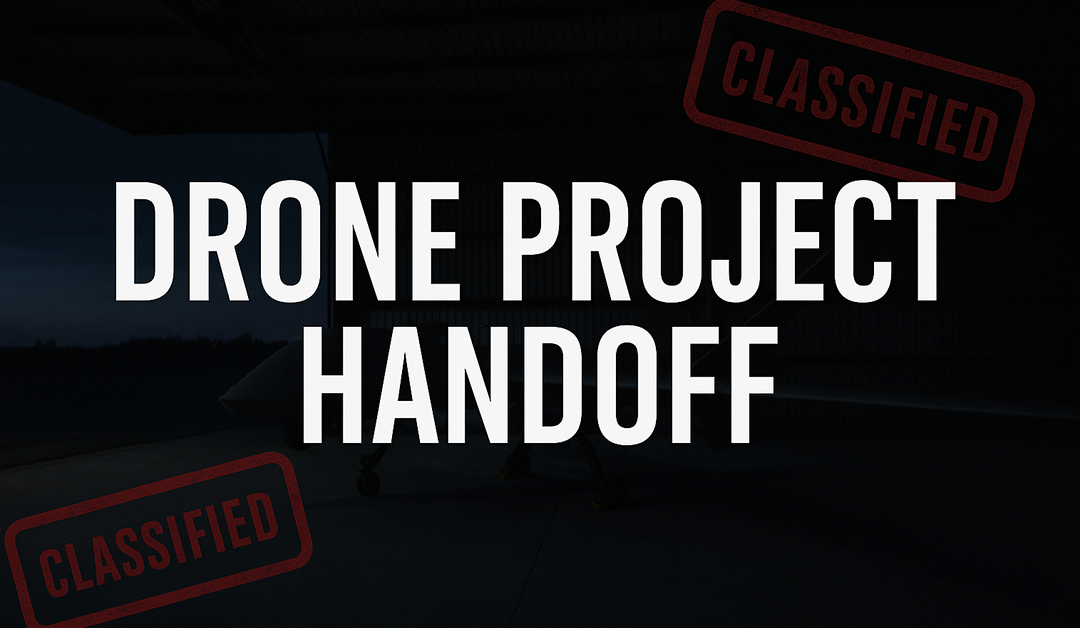In January 1970, behind locked doors and classified clearance levels, the CIA orchestrated a handoff that few outside the intelligence community would ever know existed.
The project was called AQUILINE-a highly classified CIA drone program designed for long-duration surveillance deep inside denied territory.
What makes this handoff extraordinary is not just the technology-but the scale of coordination, secrecy, and military involvement documented in the declassified Memorandum of Understanding between the CIA’s Office of Special Activities (OSA) and the Office of Research and Development (ORD).
This was more than project management.
It was the quiet transfer of an advanced aerospace surveillance system-tested at Area 51-from black-budget R&D into a ready-to-deploy military operational asset.
🛠️ Engineering, Operations, and Handoff Conditions
At the time of the agreement:
-
ORD was still managing the major contract with McDonnell Douglas Astronautics Company (MDAC)
-
The transition to OSA was scheduled to begin around January–February 1971, pending the completion of testing
-
Both groups agreed that test extensions could delay turnover, but all changes had to be closely coordinated
ORD would continue to:
-
Budget and fund research items with broader applications
-
Oversee development of advanced AQUILINE payloads through prototype stages
OSA, meanwhile, would take over:
-
Procurement of aircraft, sensors, payloads, and support equipment
-
Contracting for all operational items from July 1970 onward
-
Security for the system at Area 51, including shuttles, personnel clearances, and test site logistics
This was not just a drone-it was a multi-agency ecosystem of stealth, surveillance, and advanced aerospace engineering.
🔐 Three Phases of Classified Security
Security responsibilities were split by timeline and function:
-
ORD retained security oversight for its contracts, such as those with MDAC
-
OSA was assigned operational and Area 51 security-including monitoring all visitors, shuttle logistics, and classified building access
-
Once the system reached prototype and field application, it would be absorbed entirely into OSA’s contracting and security system
To aid the transition, a new unclassified nickname-Project M277-was introduced for test phases at Area 51. The official "AQUILINE" designation would be phased out in favor of a fully operational project name: AZAN5.
🧪 Field Deployment, Payloads, and Training
Once R&D phases ended, the AQUILINE system would move into:
-
Operational validation testing, led by OSA
-
Field Unit training, also conducted at Area 51
-
Integration of AGCS (Airborne Ground Control Systems), vehicles, and equipment
ORD would continue working on new payloads and aircraft modifications applicable to other programs, while OSA would manage flight-readiness and mission adaptation.
The final aim: create a field-operational intelligence platform that could be deployed without external visibility-and possibly without direct human control.
🕳️ The Drone With a Vanishing Name
By structuring the handover under layered codewords and project names, the CIA ensured the AQUILINE program would not survive in public records as an R&D project or an operational unit.
Instead, it would become invisible by design-absorbed into compartmented military systems, new codenames, and more deeply classified operations.
Signed by:
-
Brigadier General Donald H. Ross, Director of Special Activities
-
Robert M. Chapman, Director of Research and Development
The memo stands as rare evidence of how Cold War surveillance evolved from conceptual sketches to operational readiness, just out of public view.






